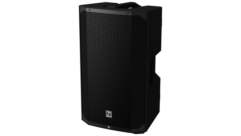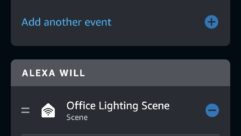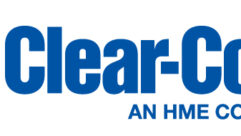Electro-Voice’s XLC and XLD Combo Impresses at the Oregon Jamboree Festival
Aug 19, 2005 11:34 AM
The new Electro-Voice (EV) XLD Very Compact line array is lending itself to a wide range of applications as the hardest-working addition to Portland, Oregon-based Horne Audio’s inventory. One such event at which Horne Audio’s XLD boxes recently impressed their owner and the audience in equal measure was at the 13th annual Oregon Jamboree, where Peter Horne employed eight XLD 281 boxes (the full-range, dual-8” element box in the X-Line Very Compact line) as front fills flown under the XLC main arrays.
“The Oregon Jamboree is a three-day outdoor country music and camping festival that attracts some of the biggest names in the business,” says Horne. “The Jamboree takes place in Sweet Home, Oregon, nestled in the foothills of the Cascades. This year the festival ran on the last three days of July and saw performances by Travis Tritt, Lone Star and Merle Haggard. This has grown to be a major festival event with serious attendance numbers. So, the organizers were looking for a world-class PA to do it justice when we were approached to run sound for the first time, three years ago.
“That’s when we brought in the XLC, and the festival sounds better than ever,” adds Horne. “We run two arrays of 12 XLC 127+ boxes per side, and this year the addition of four XLD boxes to the bottom of each array gave us even greater results. Since taking delivery on the XLDs earlier this summer, we’ve found they provide a really flexible balance of compact size, high output, and full bandwidth coverage that nicely fills in the application gaps between small-format trap boxes and the XLC, with all the benefits of line array performance and EV’s Line Array Prediction Software. We have a 105 dBa noise limit at FOH, so using the XLDs allows us to deliver more controlled, even coverage throughout the venue.
“Using the XLD in conjunction with the XLC gave us a couple of advantages,” Horne explains. “For one, the XLC has a vertical coverage pattern of 8-degrees, whereas the XLD is a 10-degree box, making it really good for evenly dispersing energy at short distances. We tried this out prior to the show and both the client and I noticed the difference. Secondly, we’re getting more drivers up there by switching out a couple of XLCs with four XLDs. The two ND2HF drivers in each XLD box are amazingly responsive. All of this translates into greater attention to sonic detail in the near field, allowing me to focus more of the XLC’s energy further into the audience. But perhaps the most impressive thing about the XLD was the fact that all this additional performance came from eight tiny boxes that you could hardly see hanging there from FOH.”
Aside from being a versatile addition to a larger EV array, Horne says the XLD more than holds its own in smaller-scale applications. “We’re using our other 16 XLD boxes as the main arrays at the Oregon Zoo summer concert series. We’ve already had great results with the XLD at performances by John Hiatt, Chris Isaak, the Indigo Girls, and many more. In previous years we used numerous delay towers with trap boxes to achieve coverage. Now, with a much smaller footprint and a much lighter rig, we’re achieving superior coverage with the XLD, and staying within the venue’s 98 dBa noise restriction.
“Everybody involved in the shows have been really pleased with the sound quality, even though many of the engineers, at first, couldn’t believe that arrays this small are up to the job. We’re flying eight XLD boxes per side, covering 3500 seats in a grassy amphitheater. In this application, the XLDs prove themselves with concert quality sound in a smaller space with all the sonic definition, easy rigging, and DSP convenience you find in the larger EV arrays, but in a very manageable, compact package that is visually unobtrusive. We’ve had our XLDs for a couple of months now, and from the scope of applications to which these boxes have already lent themselves, I’d say that design mission has definitely been accomplished.”
Other Telex Communications Pro Audio equipment was used including a Midas Heritage 2000 console at FOH and a Heritage 3000 at monitor position.










